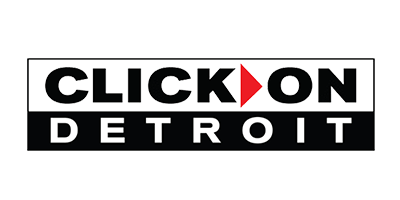
Table of Content
- How does Google Rank a B2B Website?
- A Cheat Sheet of 200 Known Ranking Factors
- What are the Latest SEO Updates by Google?
- Key Factors to Focus with B2B Enterprise SEO
- How B2B Enterprises can Dominate SEO with Google
- What is Google Search Console, and How Does It Help SEO?
- What is the Future of B2B SEO?
- FAQs
Google Search Results are what separate the search engine giant from others like Bing. And the former’s goal is to continually upgrade its search algorithms through subtle-but-important changes to provide more relevant results, answering visitors’ queries quicker than earlier.
Recently, the SEO landscape has evolved noticeably; Site Previews and Rich Snippets are a few recent updates among many. However, with every single amendment, Google is driving home a clear message – content relevance and brand authority are valuable ways to drive search results.
Enterprises following the B2B, SaaS models, in particular, should stay up-to-date with the changes. B2B Enterprise SEO increases organic search engine traffic and rankings.
When done right, a B2B marketing strategy can place a website front and center of people actively looking to engage with services similar to your business offerings.
Needless to say, a B2B model is unique and distinct from B2C and D2C. Hence, a given fact – SEO strategies targeting such models differ.
B2B SEO vs. B2C SEO
A B2B buying process is more complex, inducing longer sales cycles and larger purchases. The main difference between a B2B SEO and a B2C SEO lies in their core objectives. However, there are variations as well.
To begin with, a B2C or Business-to-Customer models involve a direct connection between sellers and final buyers. It is a practice of selling finished products directly to end-users. Hence, search engine optimization strategies are woven to increase site traffic, bring more visitors, and close sales. A B2C SEO usually targets a broader audience.
Contrarily, a B2B or Business-to-Business model involves the practice of selling goods/services to other businesses. Hence, the SEO marketing strategy is designed to magnify brand exposure for generating quality leads. Sale closures are done later by the in-house team. And needless to say, a B2B Enterprise SEO targets only a small section of key decision-makers who are a part of organizations matching your ideal customer profile.
A B2B sales funnel a lot more intricate than B2C.
For example, a B2C customer visits the store or website directly after seeing a post/advertisement of the desired item and makes the purchase instantly from the website/store. On the other hand, a B2B model supports a long-haul process of attracting leads and converting them into buyers. It takes a few months from the time a prospect finds out about your services to transform into a lead and then eventually become a paying client.
The more complicated the sales funnel, the more sophisticated the SEO strategies are to drive higher conversions. And B2B Enterprise SEO falls under the said category.
B2B SEO vs. D2C SEO
A D2C business model or a Direct-to-Customer eCommerce model connects product manufacturers directly to customers by leveraging the brand’s sales and third-party logistic channels, such as store outlets, online stores, third-party retail shops, and logistics. It sounds like a B2C model; however, there is a slight difference.
D2C models allow businesses to utilize digital channels to offer customers a modern experience, usually tailored to their preferences from end to end. Since their sales funnels are smaller and less intricate than B2B models, the SEO strategies are much more straightforward. Further to the mentioned point, statistics show that 93% of D2C brands think that acquisition is their biggest priority, using methods like SEO, social media, and direct traffic. Unlike B2C models, a D2C eradicates the middleman; hence, the latter’s robust SEO strategy omits any possibilities of black hat techniques or keyword stuffing to market directly to end users. Instead, they focus only on on-page SEO marketing strategies like landing page optimization alongside social media activities, PPC advertising, and others to speed up customers’ buying journeys. In addition, they use various tactics to influence a customer at every conversion funnel stage.
Contrarily, B2B Enterprise SEO redirects efforts to get more calls for quotations and reviews. However, the SEO ranking time is much less than in B2C and D2C models. The reason being the audience is specific and highly niched.
Nevertheless, the success of a comprehensive SEO marketing strategy for the three models boils down to keyword selections. For B2B, keywords are more technical and specific to the industry. But for B2C and D2C SEO, the trick is to rank for exact, relevant, and related keywords.
How does Google Rank a B2B Website?

Google’s search algorithm is quite specific when ranking B2B websites based on their quality and performance. And it determines local ranking on relevance, distance, and prominence.
Every search engine, including Google, evaluates web pages against performance metrics, aka ranking factors, to decide the ideal order of relevant results for a given search query. These ranking factors are crucial for launching an effective B2B SEO strategy.
Over the years, the search engine giant has released thousands of algorithm updates to make search results more intent and relevant. Google considers these algorithms, or key ranking factors, to evaluate websites, identify the best of the lot, and boost their rankings on relevant search pages. There are approximately 200 known ranking factors; a few are proven, while others are just speculation.
A Cheat Sheet of 200 Known Ranking Factors

The following factors are known to impact B2B and B2C SEO the most.
- Domain Factors: These factors are usually related to your website domain.
- Domain age
- Domain keyword, including the first word in the domain
- Domain registration length
- Keyword in subdomain
- Domain history
- Penalized Whois owner
- Public Whois instead of private Whois
- Page-Level Factors: These are factors considered for website page optimization.
- Keyword in the title tag
- Keyword at the beginning of the title tag
- Keyword in the meta description tag
- Keyword in the H1 tag
- Keywords frequently used in the content
- Content length
- Word count rankings
- A linked table of contents
- Keyword density
- Semantically related keywords
- Semantically related keywords in meta title and description
- In-depth quality content
- Useful content
- Page loading speed via HTML
- Page loading speed tested on Chrome
- Core web vitals
- No duplicate content on the same site
- Image optimization through ALT, title, and file name
- Content recency and relevancy
- Page age
- Number of content edits during updates
- Historical data on page updates
- Proper use of rel=canonical
- Keywords in H2 and H3 tags
- Keyword in the first 100 words
- Grammar and spelling
- Page content authenticity and originality
- Entity match
- Number of outbound links
- Mobile useability and optimization
- Hidden content on mobile, not indexed
- Page optimized for mobile
- Presence of multimedia
- Number of outbound links
- The quality of outbound links
- The theme of outbound links
- Helpful supplementary content
- Content hidden behind tabs
- Number of internal links pointing to the page
- Quality of the internal links
- Too many broken links
- The reading level of the page
- Many affiliate links
- Many HTML errors
- Authority/trust level of the domain
- Authority/trust level of the page
- PageRank
- Length of URL
- The closeness of the URL to the homepage
- Presence of keyword in URL
- Opinion of human editors
- Relevance of page’s category to a page
- Content formatting for user-friendliness and readability
- Page priority in the sitemap.xml
- UX signal from pages ranking for the same keyword
- Citing references and sources
- Use of a user-friendly layout
- URL string in Google search engine results
- Internal link anchor text to the page
- Use of structured data
- Site-Level Factors: As the name suggests, these factors go above and beyond the page level to study the whole site.
- Presence of a contact us page or an appropriate amount of contact information
- Content on the site provides value or new insights
- TrustRank to show your site is known and trusted
- Website updates
- Site architecture
- Presence of a sitemap
- Long-term site downtime
- Location of server
- HTTPS / use of a valid SSL certificate
- Presence of legal pages with terms and conditions and privacy policy
- Unique metadata
- Use of breadcrumb markup
- Sitewide mobile optimization
- Sitewide user-friendliness
- Bounce rate
- Domain authority
- User reviews
- Site reputation
- Backlink Factors: These factors evaluate the sites linking back to yours and determine where to rank your website. Sites with better quality backlinks and content tend to rank higher on search engines.
- Age of linking domain
- Number of referring domains
- Number of links from separate c-class IPs
- Number of referring pages
- Anchor text of backlinks
- ALT tag of image links
- Number of links from .edu and .gov domains
- The trust factor of linking page
- The trust factor of linking domain
- Presence of links from competitors
- Number of links from expected sites in your industry
- Links from bad neighborhoods
- Number of links that are not from ads
- Country TLD of referring domains
- Domain authority
- The presence of some no-follow links
- Diversity of link profile
- Context of content the content of a linking page
- Presence of more follow links that are sponsored or UGC
- Lots of backlinks to URLs with 301 redirects
- The text that appears when you hover over a link
- Link location on the page
- Location of link in content
- Links from relevant domains
- Links from relevant pages
- Presence of your page’s keyword in the title of the linking page
- The natural rate of growth in the number of links
- Spiky and unnatural rate of growth in the number of links
- Links from top resources on a certain topic or hubs
- Number of links from sites that are considered authority sites
- Linked as a source in a Wikipedia article
- Words around your backlinks
- Backlink age
- Links from real sites vs. fake blogs
- Natural link profile
- Excessive reciprocal links
- Links in real content vs. UGC
- Backlinks from a page with a 301 redirect
- TrustRank of linking site
- Fewer outbound links on the linking page
- Links in real content vs. links in forums
- Word count of linking content
- Quality of linking content
- Sitewide links = one link
- User Interaction: Excellent user experience with websites is another determining factor that impacts a site’s ranking.
Some of those UX factors include the following: –- The organic click-through rate for the exact keyword
- Organic click-through rates for all ranking keywords
- Dwell time
- Bounce rate
- Measurement of how users interact on your site based on RankBrain
- Total direct traffic
- Percentage of repeat visitors
- Blocked sites
- Percentage of visitors that click on other pages on the SERP after clicking visiting your page
- Page frequently bookmarked by Chrome users
- Number of comments on the page
- Special Google Algorithm Rules: There are specific algorithms designed by Google that are not directly connected to your website or domain but are essential for improving search results.
- Need for diversity in the SERP
- Need for freshness in the SERP
- Browsing history of the user
- Search history of the user
- Succinct answers, formatting, page authority, and HTTPS for featured snippets
- Geo-targeting
- Exclude adult content or curse words
- High content quality standards for YMYL keywords
- Legitimate DMCA complaints
- Need for domain diversity in SERP
- Transactional searches
- Local search results
- Presence of news stories related to keywords for the Top Stories box
- Search intent
- Presence of big brands with relevant content
- Presence of results optimized for Google Shopping
- Image results
- Branded search
- Easter eggs and April Fools’ Day jokes and hoaxes from Google
- Spammy queries
- Spammy sites
- Brand Signals: Branding strategy also falls under the SEO umbrella, influencing brand mentions on the Internet.
Here are the factors to consider- Brand + keyword searches
- Branded anchor text
- Twitter profile with followers
- Official LinkedIn page
- Facebook page with lots of likes
- Branded searches
- Known author or verified online profile
- Real social media accounts
- Top stories with brand mentions
- Brand mentions without links
- The physical location of the offices
- On-Site Webspam Factors: Your website shouldn’t look spammy on the search engine.
But the chances are high if the following factors are ignored.- Low-quality content
- Links to bad neighborhoods
- Multiple and sneaky redirects
- Flagged server IP address
- Distracting ads and popups
- Popups that are spammy and difficult to close
- Over-optimizing the site
- Gibberish content
- Use of doorway pages
- Lots of ads above the fold and not much content
- Hiding affiliate links
- Low-value content sites
- Affiliate sites
- Keyword stuffing in meta tags
- Compute generated content
- No following all outbound links
- Off-Site Webspam Factors: These factors influence spamming outside your website but directly connect to it.
- The unnatural and sudden increase in backlinks
- Hacked site
- Lots of low-quality backlinks
- A high percentage of links from unrelated websites
- Low-quality directory links
- Automatic links in widgets
- Links from sites with the same server IP
- Using “poison” in your anchor text
- Ignored manual actions in the search console
- Selling links
- Temporary link schemes
- Content: Google keeps emphasizing content; its latest update is directed towards this one key parameter. Certain factors influence your content marketing strategy and should be given high priority.
- Content with poor insights
- Content that doesn’t cover a topic in-depth
- Content that is not fully optimized for organic click-through-rates
- The content length is not up-to-Google standards
- Lack of keywords in H1
- Lesser number of backlinks from relevant sources
- Page loading speed above five seconds
- Mobile usability
- Website domain authority
- Over-optimization of the website
What are the Latest SEO Updates by Google?

The search engine giant is constantly rolling out new changes to improve the overall ranking process. These are termed core updates. These core updates are explicitly designed to increase the relevancy of search results and provide meaningful content for everyone.
The following is a list of the latest B2B SEO updates made by Google: –
Page Experience Update: Understanding page experience signals in Google search results is essential. It comprises a set of signals to measure how users perceive a web page and their interactions with the same beyond the information value. The set of signals covers Core Web Vitals, a combination of various metrics to measure real-world user experience for loading performance, interactivity, and visual stability of the page. Core Web Vitals metrics include search signals, like mobile-friendliness, HTTPS, and intrusive interstitial guidelines.
EAT and YMYL: The acronym ‘EAT’ stands for Expertise, Authoritativeness, and trustworthiness, wherein ‘YML’ stands for Your Money or Your Life. The former is an essential update made by Google to rate sites for their quality and improve their rankings. On the other hand, the latter is a name given for sites falling under a specific niche, Finance, Health, and Wellness. These specific publish sensitive information like facts and figures that impact a reader’s finance, happiness, success, or well-being. Hence, these sites have fixed guidelines for an SEO marketing strategy to rank on Google SERPs. The specific algorithms verify YMYL sites based on their Expertise, Authoritativeness, and Trustworthiness before their rankings are boosted.
Featured Snippets: Google announced a new update on January 2020. Its featured snippets comprise webpages appearing on the snippet that will not appear a second time on the first page of the SERP. Prior to this change, URLs appearing as featured snippets would also make their way up to the top first three results in the Google search results pages. Google made this new update in an attempt to declutter the search results.
Helpful Content Update: A recent one added to the list, Google’s latest useful content update, is targeted at marketers to rid the Internet of trash content. Its main objective is to help users find more helpful materials in search results. Any website posting unhelpful information online might have to bear the brunt when Google identifies a relatively high amount of unhelpful content posted by those sites. Here is a chance for Enterprises to upgrade their B2B content marketing strategies in alignment with Google’s content update.
Cookies Update: Websites have become more intent towards asking users to accept site cookies. Google planned to get rid of third-party cookies and replace them with a new “privacy-first alternative,” also known as Federated Learning of Cohorts, or FLoC. Unfortunately, as per the latest reports, Google postponed phasing out third-party cookies until 2024.
Key Factors to Focus with B2B Enterprise SEO

Enterprise SEO improves visibility in organic searches for big businesses. The main objective is to get the right information front and center of your target audiences and drive more organic traffic to your website. In order to achieve that, it is essential to focus on high-level and more granular SEO tactics. But before you begin with an Enterprise B2B SEO strategy for your online presence, there are certain factors to consider that might change the SEO game for you.
- Search intent signals: In simple words, search intent refers to keywords customers use to search for a product or service on the Internet. It describes the purpose of an online search and impacts website ranking on searches for those specific keywords. A clear understanding of the same helps enterprises to conduct more effective keyword research, target search terms aligning with your business and your prospects’ needs, create helpful content to answer those queries, and boost website rankings for valuable and relevant content.
- Purchase intent signals: Purchase intent signifies the probability of a customer buying a product or a service similar to your offerings. The keywords used for making queries reflect the same possibility of someone actively looking to make a purchase. Hence, optimizing SEO or ad spending accordingly will allow your online activities to focus on searches closely linked to revenue. Once you get a grip on the intent of those search queries, you can map them into your sales funnel and create content to target buyers with relevant ads that match where your buyer is in their buying cycle.
- Social signals: Now, social signals define a webpage’s collection of likes, shares, and the site’s overall visibility as perceived by a search engine. Google and other search engines consider social signals integral to website ranking metrics. The higher the likes, mentions, and shares, the better it is for a website from an SEO perspective. It is indicative of good domain authority and higher URL value.
- Thought leadership: Relevance and authority are critical when it comes to Enterprise SEO. It impacts a website’s links, PR, and rankings. And, since strong opinions are essential for thought leadership, it is crucial for SEO ranking to inculcate the same via original research reports, guest posts, presentations, and various other PR activities.
- Content marketing: B2B content marketing is about leveraging relevant content to drive profitable client action. It lays down the foundation based on which Enterprise B2B SEO strategy is built and executed. Together, content marketing and SEO can fuel your business success online and offline. Quality content, keywords, and technical optimization with a good sitemap guarantee a flawless user experience. In addition, it publicizes the content and draws traffic to your website through backlinks from high-domain authority sites.
- Digital PR: Digital PR or Public Relations and SEO are two fundamental aspects of online marketing. They work hand-in-hand to build brand awareness, create a positive image for the company, improve a website’s ranking and drive online traffic. Further, PR activities draw links from high-domain authority websites to improve your site’s authority and build trust among your prospects.
- Offline events: Not everything about SEO is online. Some offline activities have an indirect impact on your site’s online presence. Eventually, search engine optimization, be it online or offline, focuses on improving your website’s position in the searches for relevant keywords and driving traffic. Off-site SEO activities improve a search engine’s perception of its popularity, relevancy, trustworthiness, and authority. Ultimately, this will also indirectly influence a user’s perception of your website.
- Marketing and sales funnel: The funnel in B2B SEO helps marketers visualize where their prospects are and what steps are taken before making a purchase. Such analytics can guide the former into taking strategic measures and induce customers to purchase. In addition, content and marketing optimization designed for every stage of the funnel convinces a client to take a step further, explore the other stages, and eventually finalize a profitable closure.
How B2B Enterprises can Dominate SEO with Google

Like regular buyers, businesses search engines for general queries or specific solutions. Hence, SEO is a crucial marketing channel for B2B Enterprises to capture the attention of prospects. Search Engine Optimization for B2B Enterprises works slightly differently from B2C and D2C models. Here, its main focus is to move potential leads closer to making purchase decisions, not solely to make a profitable purchase.
It goes without saying that B2B SEO strategies will differ from the rest; an outline of which has been mentioned below: –
- Long-Tail Keywords: B2B Enterprise SEO relies heavily on long-tail keywords to attract highly interested prospects with specific needs, much like your business offerings. Even though such keywords might generate a handful of monthly leads, such prospects would be easier to convert. Therefore, in order to get maximum output, your keyword research should be spot on.
- Keywords in Alt Text for Images: Search Engines can only see file names for graphics; hence, at least one of the images should have the target keyword in the file name. And Alt Tags residing in the image code should also contain the specific keyword, allowing search engines to capture it as the relevancy signal. Semantic or keyword variations can be used to demonstrate a page’s relevancy.
- Keywords in Headers: Headers are known as body tags, a part of the HTML element. Body tags not only organize content for readers but also help search engines understand which part of the content is more important than the rest, depending on search intent. Therefore, using important keywords different from the ones used in the page title will serve the purpose.
- Focus on User Experience: Google and other search engines prioritize user experience. If your webpage or content fails to comply with the same, you will likely lose traffic, prospects, and rankings. Stellar user experience depends on multiple factors. Site speed, for instance, can significantly impact conversions and ROI. Likewise, dead or broken links redirecting visitors to pages that no longer exist is another example of poor UX and can prevent search engines from indexing your site content. Hence, linking to existing relevant pages on a specific topic can position your content as a reliable source of information, a definite sign of great UX. Other factors to improve user experience include enhancing the readability of content, increasing the site’s crawlability, working on core web vitals metrics, and creating compelling content.
- Include Multi-Media Types: Today, everyone expects faster and easier access to quality information. And most professionals decide whether to read the content or not in the first few seconds of landing on the said page. You get just a few seconds to impress your readers; a mere choice of words might not serve the purpose. Hence, multimedia presents the opportunity to pass on the exact message as expected by the readers in the easiest way possible.
- Use Internal Links: Like the other B2B SEO tactics, internal links also play a major role in boosting your organic search rankings. In addition, links help determine the relevance of your page content and foster greater visibility for your website.
- Focus on Top of the Funnel Keywords: In B2B Enterprise SEO, brand awareness is more important than sales. Therefore, a keyword funnel is leveraged to focus on the high-searched keywords and categorize them into the various stages where a visitor might be in their purchase journey. With the right choice of search terms and phrases, marketers move site visitors through the different stages and eventually lead them to make purchase decisions. At the top of the funnel, visitors gather information and educate themselves about your brand and its offerings. Hence, the choice of keywords should be such that they induce visitors to continue in their journey till the final phase of the funnel.
- Eliminate Spammy Backlinks: The chances of getting toxic backlinks are always high, even organically. Search engines can either completely ignore these links or draw a penalty, resulting in a sudden drop in organic traffic and visibility. Hence, a backlink audit is crucial to keep your site in good shape and avert any future possibilities.
- Build your Brand: As mentioned earlier, building your brand and creating awareness is more important than making sales (which comes later) in B2B Enterprise SEO. Optimizing effective public relations strategies (PR) can quickly boost your brand’s overall reputation in the market, reduce marketing and sales costs, and increase customer awareness and recognition.
- Thought-Leadership Content: The ideal way to win business prospects is by establishing your brand as the go-to source of industry information for decision-makers. You can achieve the same with the help of quality and factual content, like articles, case studies, and whitepapers. Thought leadership content also improves your brand reputation and builds trust among prospects.
- Diversify Backlink Profiles: Backlinks are easily measurable. Diversify backlink profiles to facilitate ranking in search engines and demonstrate your brand as a reliable source of information. Further, it reflects your authority over the industry your business is focusing on. And multiple backlinks from different sources create a random footprint preventing Google from tracking or penalizing your website. However, as much as possible, care should be taken to avoid spammy backlinks.
- Increase EAT Score: EAT score affects your website’s search rankings. Google evaluates EAT scores to measure your website’s expertise, authoritativeness, and trustworthiness online. It is a recipe for high-quality websites that rank well. To raise your site’s score, you must focus on capturing high-quality backlinks, publishing thought-leadership content regularly, displaying contact details for quicker reachability, gaining incredible reviews, and so on.
Bad SEO practices to avoid
There is always a way around bending the rules of SEO and getting good rankings in the shortest possible time. It is known as Black Hat SEO. Believe it or not, Google and other search engines can come down on those websites hard and alter their algorithms to penalize such websites. It is understandable; SEO takes time to generate positive results, and amidst tough competition, keeping your business afloat with minimal traffic and quality leads is hard. Hence, many companies resort to Black Hat SEO practices, which is, again, not such a healthy thing to do. Here is a list of bad B2B SEO practices to avoid at all costs.
- Keyword shuffling: When you try to cram as many keywords as possible into a single piece of content, you are doing what, in SEO terms, means keyword shuffling. This is supposedly a bad practice but is done only to get more page views and increase search rankings. Obviously, there is no standard practice, but ideally, the keyword density should not be more than 1-2%. Any count above that makes a site spam. Google can quickly go ahead and penalize such spammy websites or content.
- Keyword cannibalization: Now, when you try to rank multiple pages or posts for the same keyword, you are inviting trouble. The chances of your website ranking getting consumed by others are high, and in SEO, this practice is referred to as keyword cannibalization. It hurts the organic performance of your website and eats away potential traffic.
- Duplicate content: Posting two identical content pieces from separate domains is a direct violation of Google’s B2B SEO guidelines. Yet, many websites do that to get traffic. However, this doesn’t spell a positive user experience. Even though a few discussion forums accept duplicate content to facilitate conversation, you can invite a higher threat of plagiarism and penalty from Google and other search engines.
- Exact match anchor text: An anchor text is a word or phrase that connects one piece of content to another. In order to build internal links, anchor texts should be created out of relevant keywords and variations. However, to link only to exact keywords within the content is always tempting. But this has become an outdated practice, and Google can rank your site less favorably.
- Spammy link building: There’s a term in SEO for creating backlinks. It is called a link farm, a cluster of websites hyperlinking to each other to collectively build rank in search indexes. This is spamming a search engine and should be avoided at all costs.
- Cloaking: Another example of spamdexing would be cloaking. As the name suggests, this is a parlor trick of deception where a different webpage is shown to the search engine while hiding the main page visible only to viewers. For example, a webpage may be programmed to display an HTML page to search engines while it appears as a set of images to viewers. Google can permanently ban your website if your Enterprise SEO practices involve any amount of spamdexing like the two mentioned above.
What is Google Search Console, and How Does It Help SEO?

Google Search Console is a free service offered by Google to help B2B enterprises monitor, maintain, and troubleshoot any problem related to their site’s performance on search results. In addition, it clarifies how Google perceives your site so you can improve its performance.
Search Console comprises tools and reports to help owners take the following actions and improve their SEO marketing strategies for better rankings.
- Enable Google to find and crawl your website
- Fix indexing issues or request for re-indexing of fresh or updated content
- View search traffic data for your website
- Receive alerts regarding indexing, spamming, or other site-related issues
- Check out for sites linked to your website
- Troubleshoot issues such as AMP, mobile usability, and other search features
How to Get Started with Search Console
Now, here’s the catch – just by implementing Google Search Console, your website’s ranking will not automatically jump to position one. However, the insights you draw from its tools can help you improve B2B digital marketing strategies for better results. There’s no signup fee needed. Instead, you can leverage the tools to identify and fix technical or security issues, index your website, and gather insights for creating helpful content.
Here’s a beginner’s guide to getting started with Google Search Console: –
- Signup for free
- Add to verify site ownership
- Drag and drop the embedded window for help
- Learn the basics of Google Console and its usages
- Check your website’s dashboard for security issues or policy violations
- Browse various tools and reports and read their documentation
- Learn how Search Console calculates impressions, clicks, and positions
- Take help from the online community, if needed
What is the Future of B2B SEO?

The future of SEO, specifically B2B Enterprise SEO, is quite bright, but it will be a challenging roller coaster ride, courtesy of new updates being rolled out by Google. The search engine is leaving no stone unturned in making the Internet a reliable source for gaining authentic information as fast as possible. Hence, it has become imperative for B2B Enterprises to stay well-informed about upcoming updates and trends.
Here’s a brief overview of what can be expected from B2B SEO in the coming days: –
- Zero-click searches, including featured snippets, instant answers, knowledge panels
- Helpful, user-first content with high EAT score and searcher’s intent-focused
- Voice searches
- The rising importance of site audits
- Mobile-friendly UX and SEO
The future of SEO, specifically B2B Enterprise SEO, is quite bright, but it will be a challenging roller coaster ride, courtesy of new updates being rolled out by Google. The search engine is leaving no stone unturned in making the Internet a reliable source for gaining authentic information as fast as possible. Hence, it has become imperative for B2B Enterprises to stay well-informed about upcoming updates and trends.
Here’s a brief overview of what can be expected from B2B SEO in the coming days: –
- Zero-click searches, including featured snippets, instant answers, knowledge panels
- Helpful, user-first content with high EAT score and searcher’s intent-focused
- Voice searches
- The rising importance of site audits
FAQs
How often does SEO need to be updated?
SEO rules change constantly. Hence, the best practice is updating old posts and re-evaluating strategies once in three months.
How does SEO work?
B2B Enterprise SEO, or SEO, in general, follows a strategic approach to optimize website content and boosts its search rankings. SEO covers everything from keyword research to inbound links and various off-site activities.
How does SEO improve a website’s authority?
Creating authoritative, thought-leadership, and high-quality content is one of the key drivers for improving a site’s rankings on Google SERPs. In addition, there are other measures undertaken, like auditing websites, removing spammy backlinks, acquiring quality backlinks from authority sites, optimizing website architecture and user experience, and many others.
How long do SEO updates take?
B2B Enterprise SEO takes time to drive desired outcomes. However, the momentum is gradually built, and you can expect positive traffic generation, visibility, and site rankings within four to six months.
Does content updates improve SEO?
Everything in Enterprise SEO optimization boils down to content, which directly impacts your website’s rankings for multiple reasons. Every time you update website content, search engines notice and immediately re-arrange your site’s ranking. In order to gain the premier ranking position for your website, you need to update the content frequently to allow search engines to reassess its situation on its index.
What is SEO life-cycle?
Like products, SEO also has a definite life cycle. Each phase of the cycle focuses on keeping your business at the top of the minds of your prospects. It starts with keyword research and analysis and ends with conversion rate optimization, involving everything in-between.
What is Google sandboxing?
If your website domain is new, chances are your site will not be indexed or featured at the top of SERPs for 6-8 months. It is a probation period for your website and is termed Google Sandbox. The search engine considers older pages to be more authentic and relevant compared to the new ones. When sandboxed, your website will appear only on the search page after entering the actual domain name. Your site will not feature in the search results for targeted keywords, as mentioned, and your backlinks will not show.
What is an SEO roadmap?
An SEO roadmap is a strategic plan that helps enterprises to keep a check on all SEO-related activities, eliminate errors, and streamline decision-making. It should outline details about every SEO on-page and off-page tactic the company uses or intends to incorporate as a part of its B2B digital marketing efforts.
What is the latest Google update for SEO?
Recently, Google rolled out its latest update for SEO – product reviews and core updates. The latter focuses on the website’s relevance, targeting all sites, regardless of niches. On the other hand, the former targets only product review sites. Learn more about these updates before you get started with SEO.
What are the top SEO trends for 2022?
The top SEO marketing strategies trending include core web vitals, high-quality backlinks, video, AI content, EAT, schema markup, long-form content, people-also-ask, and many more.

















